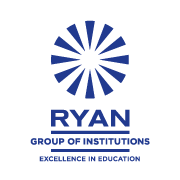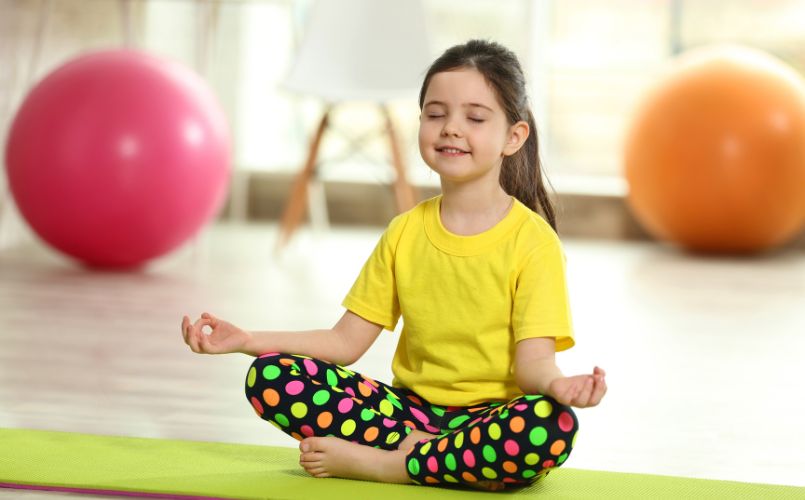In the bustling environment of elementary schools, where the focus is often on academic achievements and social development, introducing mindfulness in education offers a refreshing shift towards nurturing the mental and emotional well-being of students. Mindfulness is a practice of being fully present and engaged in the moment, with a non-judgmental awareness of one’s thoughts, emotions, and surroundings. This simple yet profound practice of mindfullness can be particularly beneficial in the elementary environment, where young minds are just beginning to learn how to navigate the world around them.
Why Integrate Mindfulness in Education?
The integration of mindfulness practices into the classroom is rooted in the understanding that the well-being of students goes hand in hand with their academic and social success. Research, including findings from the
The Relevance of Mindfulness Practices
Mindfulness is more than just a tool for managing stress; it’s a way of cultivating a learning environment that encourages students to become more aware of their internal and external experiences, promoting a sense of calm and focus. This is particularly relevant in today’s fast-paced and overtly competitive world, where children are increasingly exposed to digital distractions and pressures from a young age. By teaching mindfulness, educators can provide students with the skills to manage their emotions, enhance their concentration, and approach challenges with resilience and clarity.
Benefits Highlighted by Experts
Educational experts and psychologists advocate for the inclusion of mindfulness in the curriculum as a foundational skill for life-long learning and well-being. Dr. Jon Kabat-Zinn, a pioneer in mindfulness research, emphasizes that mindfulness can help children develop an inner sense of balance and confidence that supports their academic and personal growth. Furthermore, it fosters empathy and understanding, essential qualities for building positive relationships and a supportive classroom environment. He quotes
Mindfulness isn’t about silencing the mind; it’s about becoming the observer of its noise, finding peace amidst the chaos.
Incorporating mindfulness into the classroom doesn’t require extensive resources or time. Simple practices such as starting the day with a few minutes of breathing exercises, encouraging students to take mindful breaks, or integrating short mindfulness activities between lessons can make a significant difference. These practices not only benefit the students but also create a more harmonious and focused learning environment.
Understanding mindfulness in education is the first step towards creating a nurturing and supportive educational environment. By recognizing its benefits and relevance, educators can begin to implement practices that foster a culture of awareness, empathy, and resilience among young learners. As research and practice continue to evolve, the integration of mindfulness into elementary education holds the promise of developing well-rounded individuals equipped to navigate the complexities of the world with grace and compassion.
Benefits of Mindfulness in education for Young Learners
The introduction of mindfulness practices into elementary education is not just an educational trend; it’s a response to a growing body of research indicating profound benefits for young learners. These benefits span cognitive, emotional, and social domains, offering children tools that can significantly impact their learning journey and overall well-being.

Enhanced Attention and Concentration
One of the most immediate benefits of mindfulness for children is improved attention and concentration. In an age where distractions are constant, the ability to focus is akin to a superpower. Mindfulness teaches children to anchor their attention in the present moment, whether it’s on their breath, a sensation in their bodies, or a particular task. This skill, once developed, is transferable to their academic work, allowing them to engage more deeply and effectively with their studies. A study published in the Journal of School Psychology found that students who participated in mindfulness programs showed significant improvements in attention and academic performance.
Emotional Regulation and Resilience
Mindfulness also plays a crucial role in emotional regulation. By becoming more aware of their thoughts and feelings, children learn to navigate their emotions without becoming overwhelmed by them. This emotional intelligence lays the foundation for resilience, enabling young learners to face challenges and setbacks with a more balanced and composed mindset. Research from the University of British Columbia has shown that mindfulness programs can lead to reductions in anxiety and depression among school-aged children, highlighting its potential to support mental health from a young age.
Improved Social Skills and Empathy
Beyond the individual, mindfulness in education has the potential to transform social dynamics in the classroom. As children become more attuned to their own emotions, they also develop a greater capacity for empathy and understanding towards others. This can lead to more positive interactions, reduced bullying, and a more inclusive school environment. Studies, including those from the Mindfulness Research Guide, suggest that mindfulness education can enhance social skills, promoting a sense of connectedness and community among students.
Stress Management
The ability to manage stress is perhaps one of the most valuable benefits of mindfulness for young learners. With academic pressures starting early, providing children with strategies to cope with stress can have lasting impacts on their academic journey and personal lives. Mindfulness offers a way to calm the mind and body, providing a sense of peace and relaxation amidst the chaos of daily life. A systematic review published in Frontiers in Psychology confirmed that mindfulness interventions could effectively reduce stress in children and adolescents.
The integration of mindfulness in education offers a multifaceted approach to supporting the development of young learners. By enhancing attention, improving social skills, and providing tools for stress management, mindfulness equips children with the skills needed to thrive in both their academic and personal lives. As we witness the transformative impact of these practices, the case for mindfulness in schools becomes increasingly compelling, promising a future where well-being and learning go hand in hand.
Integrating mindfulness into the classroom might seem daunting at first, especially with the pressures of academic curriculums and the diverse needs of students. However, embedding mindfulness practices into the daily routine can be both simple and transformative, enhancing the learning environment for both students and teachers. Here are practical, actionable strategies that teachers can employ to bring mindfulness into elementary education settings.
- Start Small:Begin with brief sessions. A few minutes of mindfulness at the start of the day or between transitions can significantly impact students’ readiness to learn and interact. Consider beginning with a simple breathing exercise, where students close their eyes and focus on their breath, counting slowly to three as they inhale and again as they exhale. This practice can center their attention and calm their minds, preparing them for the day ahead.
- Incorporate Mindful Listening: Mindful listening exercises can enhance students’ attention and empathy. Play a sound, such as a bell or chime, and ask students to listen carefully until they can no longer hear it. This exercise encourages deep listening and focus, qualities that are beneficial both in and out of the classroom.
- Use Mindfulness Cues: Introduce mindfulness cues throughout the day to remind students to return to the present moment. This could be a specific word, a visual signal, or a certain sound. These cues can help students develop the habit of centering themselves, fostering a mindful classroom environment.
- Create a Mindful Space:Designate a corner of the classroom as a ‘mindful space’ for students to use when they feel overwhelmed or need a moment to center themselves. This space can be equipped with comfortable seating, calming visuals, and perhaps some mindfulness tools like sensory bottles or calming stones.
- Practice Mindful Movement:Incorporate mindful movement exercises, such as gentle stretching or yoga, to help students become more aware of their bodies and manage energy levels. These activities can be particularly beneficial after recess or during transitions, helping students to refocus and settle.
- Engage in Mindful Eating: Use snack time as an opportunity for mindful eating exercises. Encourage students to eat slowly, paying attention to the taste, texture, and smell of their food. This practice can teach mindfulness through a relatable and enjoyable activity, emphasizing the importance of being present even during routine tasks.
- Share Mindfulness Stories and Books: Incorporate stories and books that highlight mindfulness and emotional regulation into reading time. Many children’s books now focus on these themes, providing a relatable context for discussing mindfulness and its benefits.
- Encourage Journaling: For older elementary students, introduce mindfulness journaling. Provide prompts that encourage reflection on their thoughts, feelings, and mindful moments throughout the day. This practice can enhance self-awareness and provide a personal space for students to express themselves.
- Offer Guidance and Support; As you introduce these practices, offer continuous support and guidance. Mindfulness is a skill that develops over time, and students will benefit from clear instructions and the opportunity to discuss their experiences. Sharing your own experiences with mindfulness can also help normalize the practice and build a culture of mindfulness in the classroom.
Integrating mindfulness into the elementary classroom doesn’t require extensive training or resources; it starts with simple practices that can be woven into the fabric of daily school life. By adopting these strategies, teachers can foster an environment of awareness, empathy, and focus, supporting the holistic development of their students. As mindfulness becomes a regular part of the classroom routine, both teachers and students can experience its profound benefits, creating a more harmonious and productive learning environment
As mindfulness practices gain recognition for their benefits in educational settings, it’s equally important for parents to extend these practices into the home environment. Cultivating mindfulness at home not only supports children’s learning and emotional development but also strengthens family bonds and creates a peaceful household atmosphere. Here are practical tips and guidance for parents to foster mindfulness in their children, reinforcing what is taught in schools and nurturing mindful habits that last a lifetime.
- Model Mindful Behavior: Children learn a great deal from observing the adults around them. By practicing mindfulness yourself, you set a powerful example. Engage in mindful breathing, express gratitude openly, and show how to navigate emotions calmly. Your actions will naturally encourage your children to mimic these behaviors, integrating mindfulness into their own lives.
- Create Mindful Mornings: Start each day with a simple mindfulness exercise as a family. This could be a few minutes of silent breathing together, setting intentions for the day, or sharing something you’re each grateful for. Establishing such a routine can set a positive tone for the day ahead, emphasizing the importance of being present and setting a positive mindset.
- Introduce Mindfulness Activities: Incorporate mindfulness activities into your family routine. Activities like mindful coloring, yoga, or nature walks offer opportunities for children to practice mindfulness in engaging and enjoyable ways. These activities don’t have to be lengthy; even short sessions can make a significant difference in developing mindfulness skills.
- Encourage Open Communication: Foster an environment where feelings and thoughts can be openly shared without judgment. Encourage your children to express what they’re feeling and why, helping them to articulate their emotions and recognize their thoughts. This practice not only supports emotional regulation but also enhances self-awareness and empathy.
- Practice Mindful Eating: Make mealtimes an opportunity for mindfulness. Encourage your family to eat slowly, savoring each bite and paying attention to the taste, texture, and smell of the food. Discuss the journey of the food to your table, fostering gratitude and a deeper connection to the present moment.
- Set Aside Technology-Free Time: Designate periods where the family engages in activities without technology. This could be during meals, the first hour after coming home, or before bedtime. These tech-free zones encourage more direct interaction with each other and the environment, reducing distractions and fostering more meaningful connections.
- Mindful Bedtime Routines: End the day with a mindfulness practice to promote relaxation and reflection. This could include a body scan meditation, sharing highs and lows of the day, or reading a mindfulness-themed story together. Such practices can help children wind down and process the day’s events, promoting better sleep and emotional balance.
- Addressing Challenges with Mindfulness: Introduce the concept of using mindfulness to face challenges or difficult emotions. Teach children simple breathing techniques or mindfulness exercises they can use when feeling anxious, frustrated, or overwhelmed. Emphasizing the use of mindfulness as a tool for coping can empower children to manage their emotions effectively.
- Encourage Continuous Practice: Mindfulness is a skill that strengthens with practice. Encourage regular mindfulness exercises, and celebrate the moments when your child demonstrates mindfulness in their actions or decisions. Acknowledging these achievements reinforces the value of mindfulness and motivates continued practice.
Integrating mindfulness into family life can significantly support and enhance the emotional and psychological well-being of children. By adopting these practices, parents can provide a supportive environment that complements mindfulness initiatives in schools, fostering skills that benefit children both academically and personally. As families embark on this journey together, they discover the transformative power of mindfulness in creating a more harmonious, aware, and connected family dynamic.
Overcoming Challenges and Measuring Success
Integrating mindfulness into the lives of young learners, whether in the classroom or at home, is a journey filled with potential obstacles and triumphs. Understanding how to navigate these challenges and measure the success of mindfulness practices is crucial for educators, parents, and students alike. This final part will address common hurdles in adopting mindfulness practices and offer insights into evaluating their impact effectively.
Identifying and Overcoming Challenges
Resistance from Children: Initially, some children may show resistance to mindfulness practices, finding them unfamiliar or challenging. Overcoming this hurdle often involves making mindfulness activities engaging and relevant. Use stories, games, and interactive exercises that resonate with their interests and age group. Patience and persistence are key, as is offering choices to empower children in their mindfulness journey.
Incorporating into Daily Routines: Finding time for mindfulness in already packed schedules can be daunting. The solution lies in integrating mindfulness into existing routines rather than viewing it as an additional task. This could mean practicing mindful breathing during transitions in the classroom or embedding mindfulness exercises into bedtime routines at home.
Measuring Success
- Qualitative Feedback: One of the most effective ways to gauge the success of mindfulness practices is through qualitative feedback from students, parents, and teachers. Observations and conversations can reveal shifts in behavior, emotional regulation, and stress management. Encouraging students to share their experiences can provide valuable insights into how mindfulness is impacting their lives.
- Behavioral Changes: Success can also be measured by observing changes in behavior. This might include reduced instances of conflict among students, improved focus and participation in class, or more positive interactions with peers. At home, parents might notice their children employing mindfulness techniques independently when faced with challenges.
- Academic Performance: While mindfulness primarily targets emotional and psychological well-being, its indirect effects on academic performance can be a marker of success. Improved concentration and stress management can lead to better study habits and academic outcomes, providing a tangible measure of the impact of mindfulness practices.
- Emotional and Social Development: Over time, the success of mindfulness practices can be seen in the emotional and social development of children. Look for enhanced empathy, resilience, and emotional intelligence as indicators that mindfulness is making a positive difference.
- Feedback Tools and Surveys: Utilizing feedback tools and surveys designed for students, teachers, and parents can provide structured data on the effectiveness of mindfulness practices. These instruments can measure various aspects of well-being, emotional regulation, and classroom climate, offering a comprehensive view of the impact of mindfulness interventions.
- Continuous Improvement: It’s important to view the integration of mindfulness in education as an ongoing process. Regularly reviewing practices, seeking feedback, and making adjustments ensures that mindfulness activities remain effective and relevant to the needs of the children and the school or family environment.
The journey of integrating mindfulness into the lives of young learners is both challenging and rewarding. By understanding and addressing potential obstacles, and by developing effective methods for measuring success, educators and parents can ensure that mindfulness practices have a lasting and positive impact. The benefits of mindfulness extend beyond the classroom and the home, equipping children with essential life skills that promote well-being, empathy, and resilience. As mindfulness becomes a woven part of children’s daily lives, its transformative power unfolds, revealing a path to a more mindful, compassionate, and focused generation.




